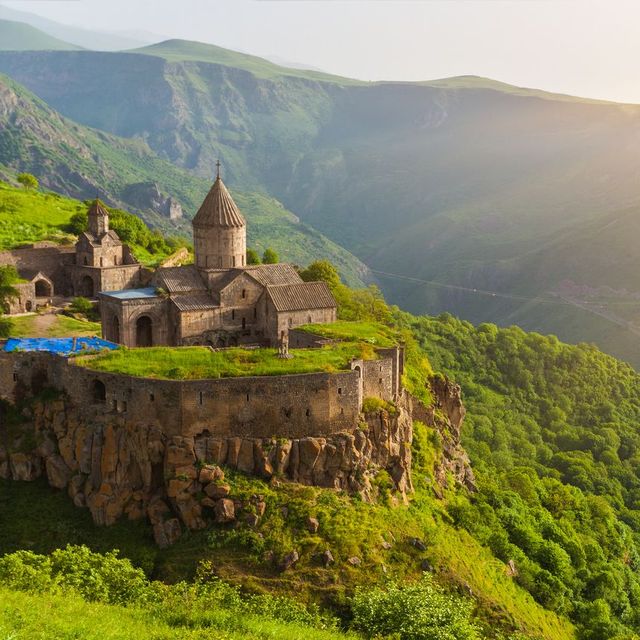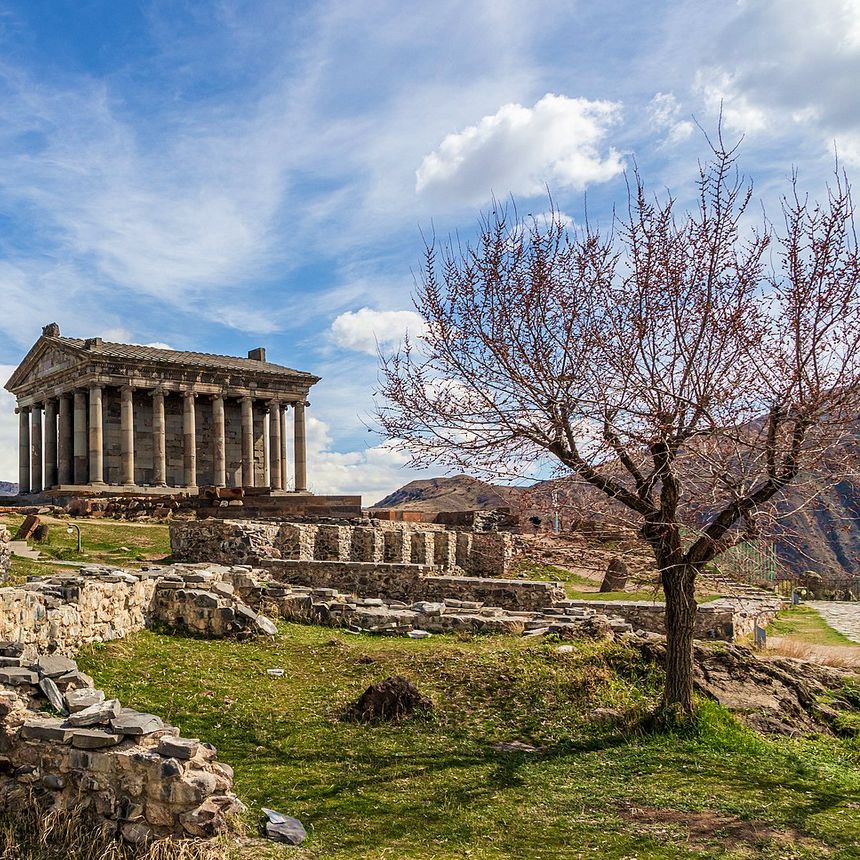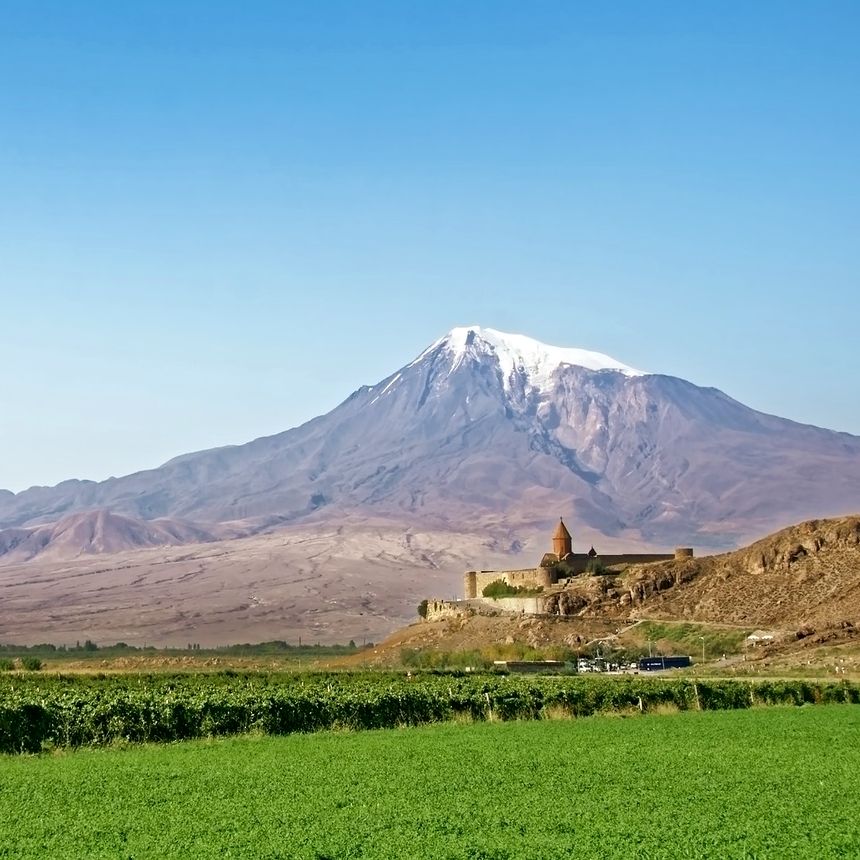From the rock-hewn churches of Lalibela in Ethiopia to the breadth of the USA’s bible belt, the tendrils of Christianity can be seen in all four corners of the globe. But where was the very first place it was adopted? As it turns out, it was in an unassuming country nestled comfortably in the crags of the Caucasus: Armenia. Regarded as the first country to adopt Christianity as its state religion in around 300AD, the Armenian Apostolic Church has claimed to be in existence since the days of the apostles, which–if true–would make it one of the oldest denominations of Christianity in the world. Despite this grand claim, most of us won’t have heard of it, and we’re probably even less likely to be able to place it on a map.
My first visit to this country was in 2015, admittedly with the sole intention of watching System of a Down play their first ever concert here. However, it was a destination that piqued my curiosity and I ended up making a trip of it. After just under two weeks I loved the country so much that I vowed to return someday, and when I found myself travelling through Georgia in 2018, the urge to revisit Armenia was too great to resist.
What I found was a country much the same as last time, but with a noticeable increase (and I use the term loosely as there was none when I first visited) in tourism. Georgia’s popularity has boomed in recent years, and, due to its proximity and ease of access, Armenia is on the up too.
Photo: Bertie Adam, 2015
The neighbouring country of Georgia is the second nation to have adopted Christianity. It’s almost like there has been a long running competitive streak, or a pattern of reciprocity between these two proud nations that has churned out churches and cathedrals left, right and centre. In my opinion the apostolic churches to be found in this part of the world are real gifts of architectural beauty. That being said, it is admittedly quite easy to get cultural fatigue from so much ecclesiastical activity, so it is important to make sure you make the right choices in which sites you end up visiting.
Tatev Monastery is the postcard perfect example of Armenian Apostolic architectural excellence, situated in the country’s south western Syunik province. In days of old, people would have had to undertake an arduous trek through forests and the Vorotan gorge in order to reach this isolated place that sits on top of a vast and monolithic basalt plateau. However, in the 21st century it’s a simple matter of taking the cable car across the canyon. I found the journey to be blissfully serene as I glided over seemingly endless furrows and grooves of verdant forest below... except for the utterly relentless reminders over the tinny speakers informing me that I was currently riding the ‘world’s longest non-stop reversible aerial tramway!’.
Over the centuries Tatev has played significant roles as both a university and monastery, being the former home and workplace for thousands of monks since its construction. Armenia is often regarded as having one of the oldest and most unique cultures in the world, and crumbling fortress exterior notwithstanding, it requires little imagination to picture how glorious it must have been at its zenith. As one of the most formative places for Armenia’s early spiritual and scholastic development, it remains an important symbol of the country’s culture and national identity, and luckily for us, conveniently easy to get to.
Khor Virap is situated atop a hillock on the Ararat plains, and appears to look out towards the mountain itself. Surrounded by vineyards and swathes of grassland that seem to stretch all the way to the mountain’s base, it’s easy to see how and why the site was considered ideal for building a place of worship and monastic reflection.
One of the most striking features here is the dramatic backdrop provided by Mount Ararat, that celebrated holy mountain looming over the Turkish border, said to be the landing place for Noah's Ark. Ararat is an intrinsic part of Armenian identity; sacrosanct but unattainable after being lost through land grabs enacted during the Armenian Genocide of 1915. In fact Ararat is so central to Armenian culture that the central cone that’s a cornerstone in their church architecture is built to symbolically represent the slopes of Mount Ararat itself.
The church architecture is regarded as the first ‘national style’ in Christian architecture, and I think what has come with this is a sense of comfort in its own skin: there is no Catholic extravagance, but nor is there a bleak sense of austerity like you might find in the Church of Scotland. It is, of course, ridiculous to claim that it hasn’t been influenced by outside agents, because it has: Arabs, Persians, and Russians are some of the many who’ve ruled over these lands, but the Armenians themselves have remained. The churches that are strewn underneath the wide open skies are testament to a nation that is so much larger than its size.
The beauty of Armenia and its churches is evident, but what makes it (and them) special? After all, coming from the UK we have plenty of our own churches scattered all over, from the tiniest hamlets to the largest cities. After having spent a little time asking myself the same question whilst crossing the Caucasus, I think it has something to do with the fact that this tiny country has always had a culture that marches to the beat of its own drum. The language’s alphabet that was originally invented in 405 AD is still used today, and remains one of the strongest reasons as to why Armenian identity has remained constant over millennia, and to be the first country to adopt the most dominant religion sounds like a fact that most would know, but we don’t.
Check out our tours with these unique experiences below
Prefer to do a tailor-made itinerary where you can choose your unique experiences and build your perfect trip?
Click here to contact us today.


